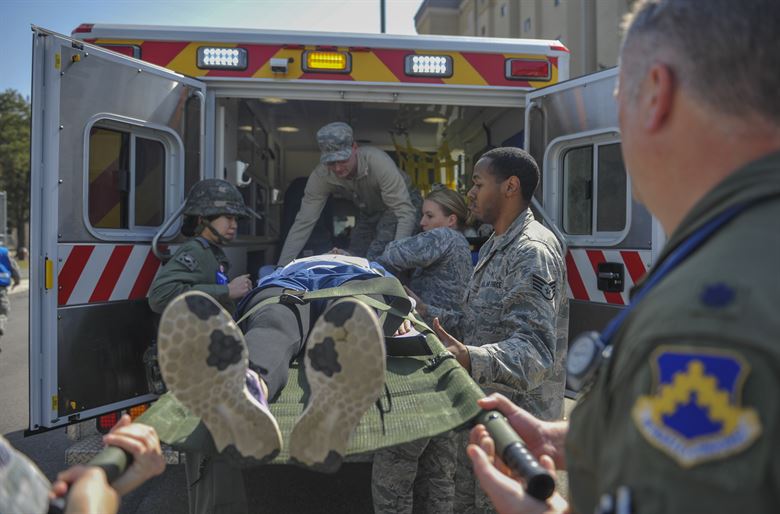 One in 25 hospital patients will contract an infection during their stay. Hospitals are well aware of the communicable diseases often transmitted among patients and take many precautions to reduce the risk.
One in 25 hospital patients will contract an infection during their stay. Hospitals are well aware of the communicable diseases often transmitted among patients and take many precautions to reduce the risk.
But new research indicates that patients might actually be exposed to these infections on their way to the hospital.
Using a DNA analysis method being popularized by a lab at Drexel University, a group of medical and public health researchers at Weill Cornell Medicine, are beginning to track the illness-causing agents hitching a ride in ambulances.
Gail Rosen, PhD, an associate professor in the College of Engineering, was part of the first team of researchers to take a broad look at the bacterial ecosystems in ambulances across the country. Their research, recently published in the journal Microbiome found a number of microbe species linked to hospital-acquired infections, as well as indicators that suggest the presence of strains that are resistant to cleaning products that kill bacteria.
“While the vast majority of microbial species were beneficial, we also found widespread evidence of species associated with nocosomial infections and antimicrobial resistance markers,” the authors wrote. “This study indicates that metagenomics may be useful to characterize the microbial ecology of pre-hospital ambulance settings and that more rigorous testing and cleaning of ambulances may be warranted.”
To glean this information, Rosen's team at Drexel performed a DNA analysis of nearly 400 samples taken from 137 ambulances across the country.
The group's method, called “whole-genome shotgun sequencing,” provides a relatively timely and thorough genetic-level look at collections of microscopic organisms — without having to collect, identify and count every organism in the group.
“The methods we developed can be used for forensic analysis,” Rosen said. “For example, we found that stethoscopes were more likely to have microbes that eat cleaning agents. We interpreted this as stethoscopes being carefully cleaned – but like with many forensic tools, this is one clue in a bigger picture. It was fun to get a peek into microbial communities’ lives, especially those that we cannot culture, to try to see how climate and geographic areas may affect ambulance microbiomes. It was really exciting to work with Dr. Niamh O’Hara, CEO of Biotia, Inc. to lay the foundation on how to best clean ambulances.”
Rosen’s Ecological & Evolutionary Signal-Processing & Informatics Laboratory in Drexel’s Electrical and Computer Engineering Department has perfected this nascent method of computational genetic research over the last handful of years. It is now enabling researchers to understand the interconnections of microorganisms and expand their perception of what constitutes an ecosystem.
The process uses a smattering of DNA collected from samples, in this case swabbed from a variety of surfaces and objects in ambulances, and by looking at randomly selected segments of the genetic chain it can essentially average out the number of each type of species present. And being able to quickly gather and analyze this information has been key to unlocking the secrets of how microbes work together to create biological conditions that affect us — for better and worse.
“If we can understand the combinations of organisms that are commonly found living together in special situations, it helps the researchers who study things like epidemiology, microbiology, ecology and public health to understand how they contribute to the conditions that we observe,” In the case of ambulance microbiomes, having this information could help to prevent the diseases that are currently thought to be contracted in a medical setting.”
Analyzing samples from ambulances in 19 cities in six states across the U.S. revealed that ambulance microbiomes do differ by region. One of the starker findings was an increase in levels antimicrobial resistant bacteria in ambulances from lower-latitudes in the east. Which suggests that they thrive in areas where it is warmer and rains more frequently, but more samples should be collected to verify this initial finding.
Many of these findings matched previous studies of ambulances conducted using bacteria culturing. This all supports the authors’ recommendation that cleaning regimens for ambulances should be standardized and more closely regulated, as it is for other health care settings, such as hospitals and clinics.
Beyond its public health application, Rosen’s lab has used shotgun sequencing to support research on everything from how our gut bacteria change as we age, to the bacteria that break down TNT.
Rosen’s group is also currently assembling a set of recommendations for using shotgun analysis to draw the most accurate conclusions from DNA, without overreaching. These guidelines will be extremely important as companies like uBiome and Second Genome grow the popularity of citizen science in this area.
Read the full study, “Metagenomic characterization of ambulances across the USA,” here.